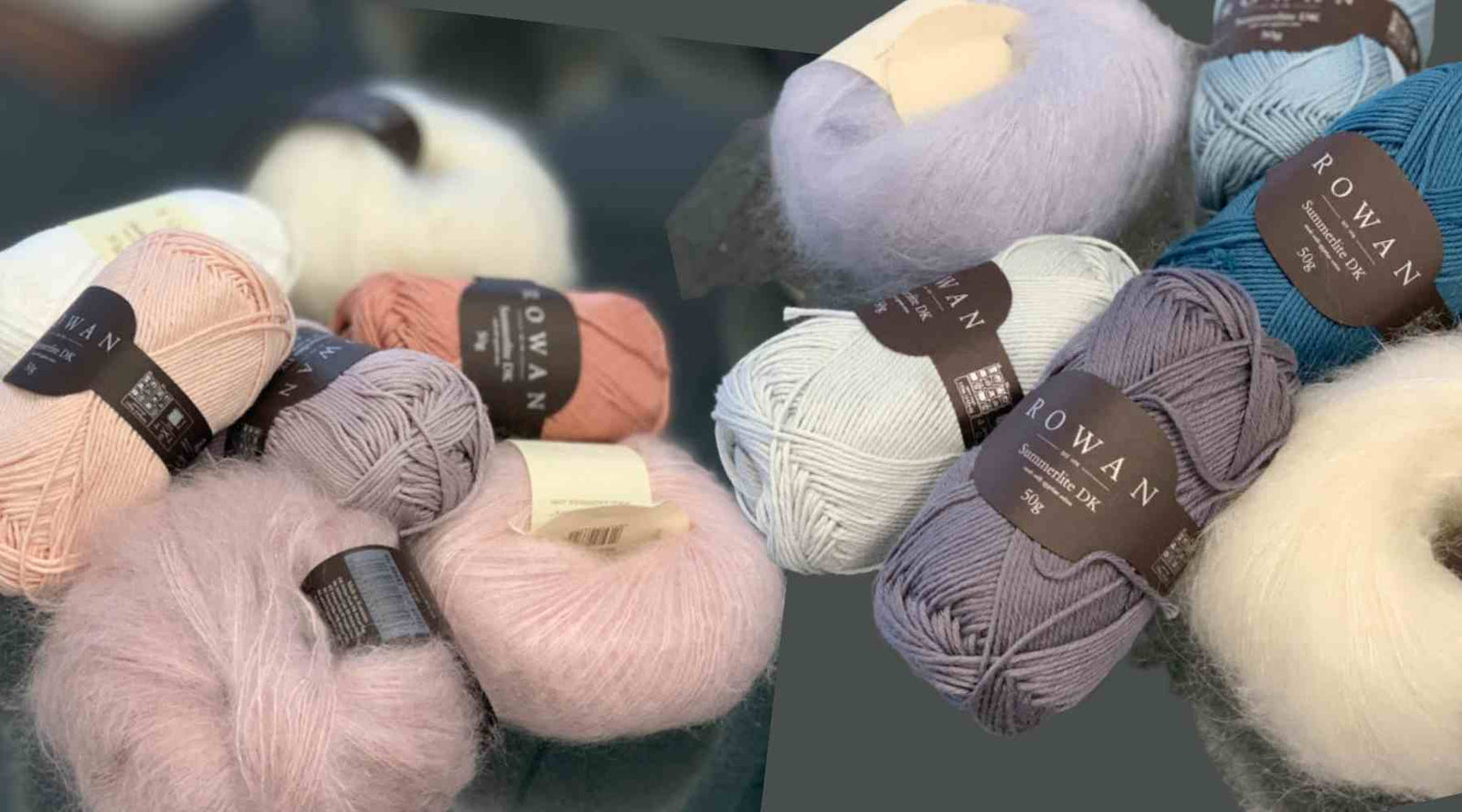Your Cart is Empty
Free shipping on all domestic orders over $150
Free shipping on all domestic orders over $150

Substituting yarn - it's about more than just gauge
April 12, 2021 3 min read
Lovely Regina was in the shop a bit ago. Enamored with the No Plain Jane cardigan another customer had knit, she wanted to knit the same garment. However, she wanted to do it in a different yarn. She looked at the gauge and saw that it was 13 stitches over 4”, so she began looking in the bulky section and fell in love with Malabrigo Mecha. Who wouldn’t, right? With a skein of Mecha in one hand and a skein of Wooladdicts Air in the other, she walked up to me and said, “I don’t get it. You told me these yarns were both bulky. They both have 135 yards per skein. But the Air is 50g, and the Malabrigo is 100g.” I love my engineer customers because they notice these things, and ask about them. Everything has to make sense, which is so important in knitting.
You see, Wooladdicts Air is a blown yarn, which means that it’s constructed by huge machines that blow fibers around a central core. As you might have guessed from its name, one of the characteristics of blown yarns is that they’re super light. The 50g skein of Air offered the exact same yardage as the plied yarn, but at half the weight. Could she use the Mecha for this garment? Absolutely, but it would have literally twice as heavy on her body. Given that No Plain Jane is a cardigan that comes mid thigh, that makes a difference of about a pound of garment weight.
So, in substituting yarn, you want to look at the original yarn and note its characteristics. Gauge is an important consideration, but as Regina discovered, it is not the only consideration.
There’s fiber as well. Andrea is very sensitive to wool, so she’s always looking for non-wool yarns to use for next to skin garments. Conventional wisdom says that you can’t substitute plant-based fibers for wool in a garment because plant based fibers lack elasticity. It’s true that plant-based fibers lack elasticity, but new yarn construction methods are addressing that issue. One of my favorite yarns is Rowan Softyak DK, which is cotton with a smidge of yak thrown in. It’s a cotton that knits like a wool, and that little bit of yak in there has absolutely nothing to do with it. It’s the construction. Softyak DK has a chainette construction. iThe yarn is basically a very fine strand of fiber machine knit into a tiny tube, kind of like an I-cord. This construction makes the yarn lighter, stronger, and more pill resistant, but most importantly, it gives even cotton yarns elasticity and bounce of wool.. I did a podcast about chainette yarns that you can see here.
There are other yarn construction methods as well, opening up a whole new world of yarn characteristics for us so that we can get exactly the look and feel we want in our fabric. These methods also significantly complicate the process of substituting yarn. It’s not just about gauge and fiber anymore -- it’s also about construction, texture, and elasticity, which cuts across all fiber types. Fortunately there’s Ravelry where you can get tons of information about the yarns that are used in a garment, and those that you’re considering substituting, so you can choose the yarn that’s right for your garment and right for you.
Warmly,
~Ellen
If you like this, please share
Leave a comment
Subscribe
Sign up to get the latest on sales, new releases and more …

